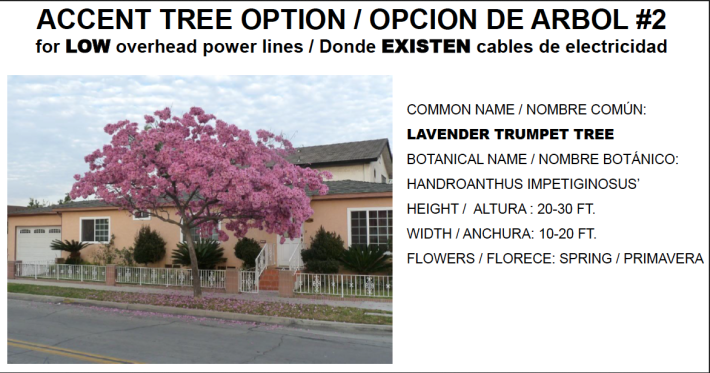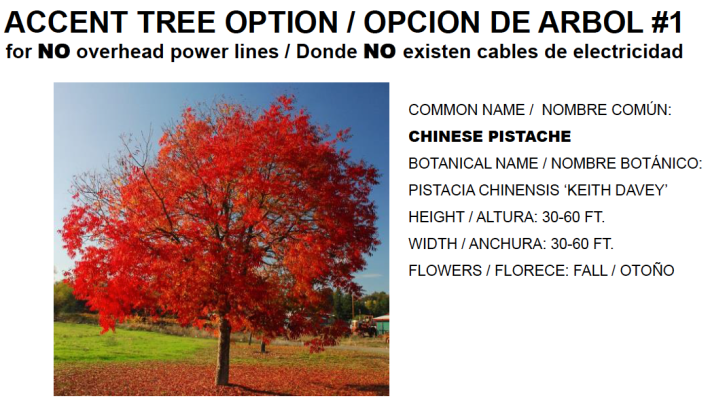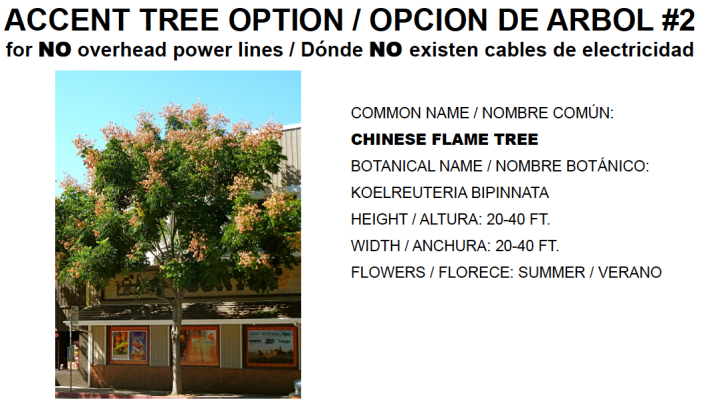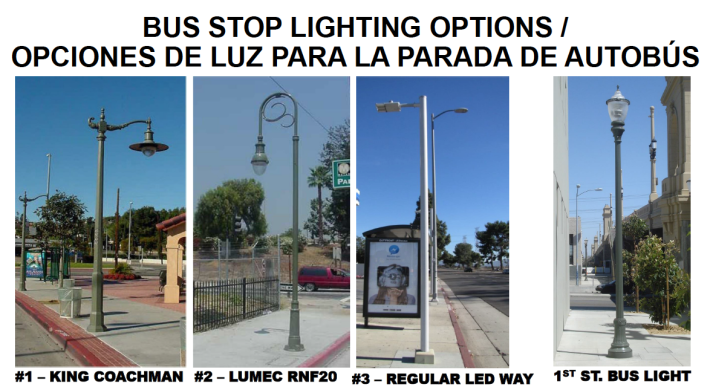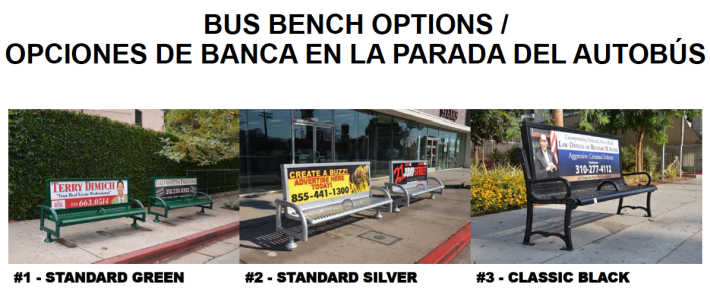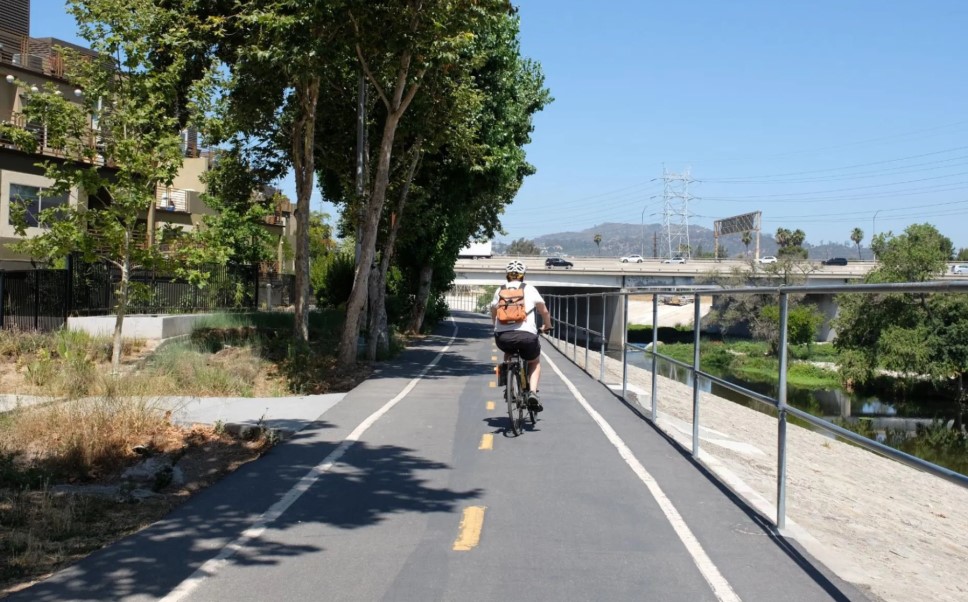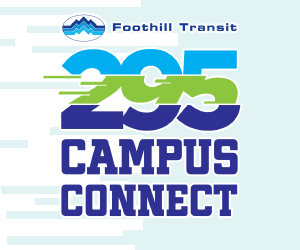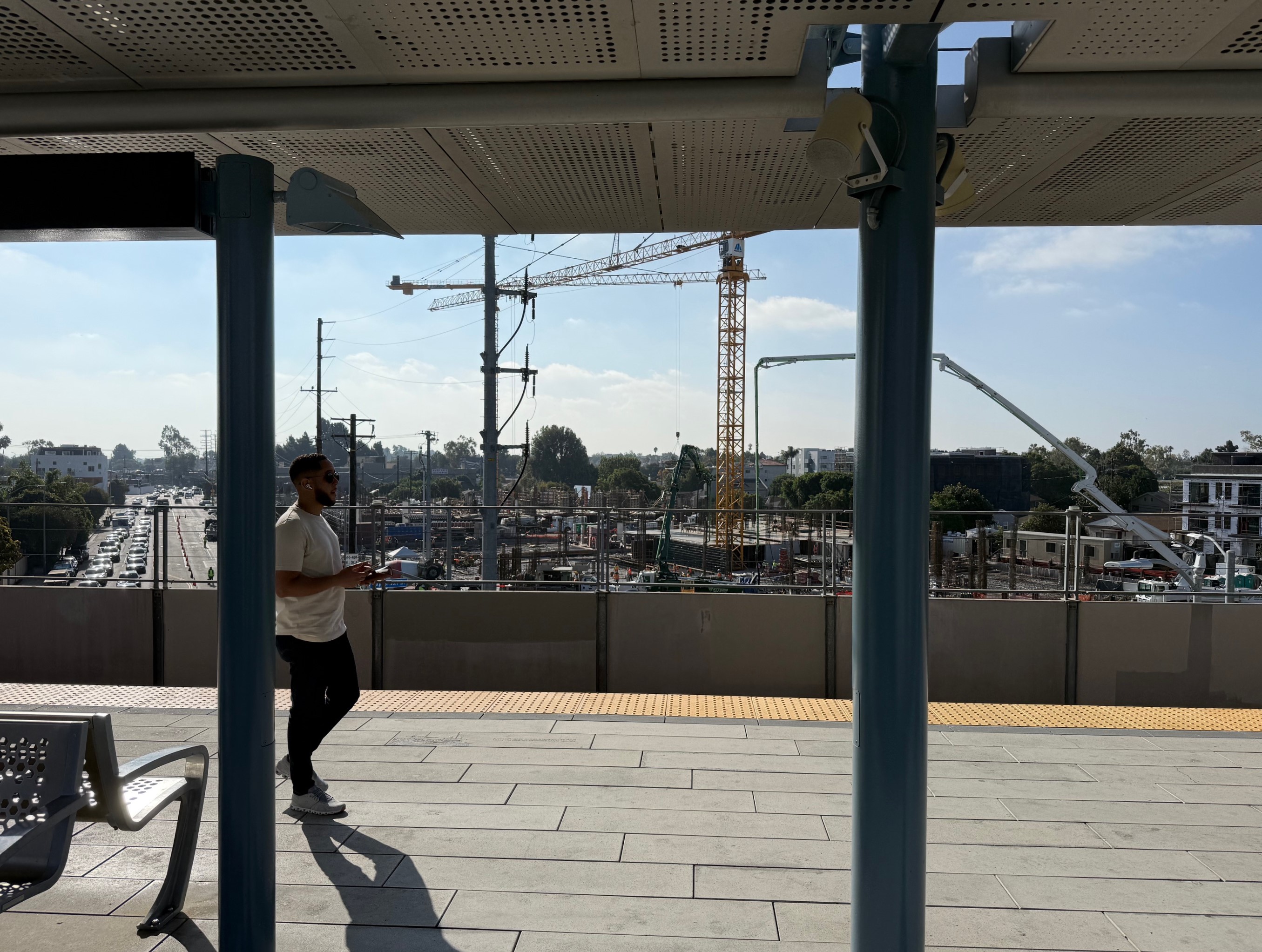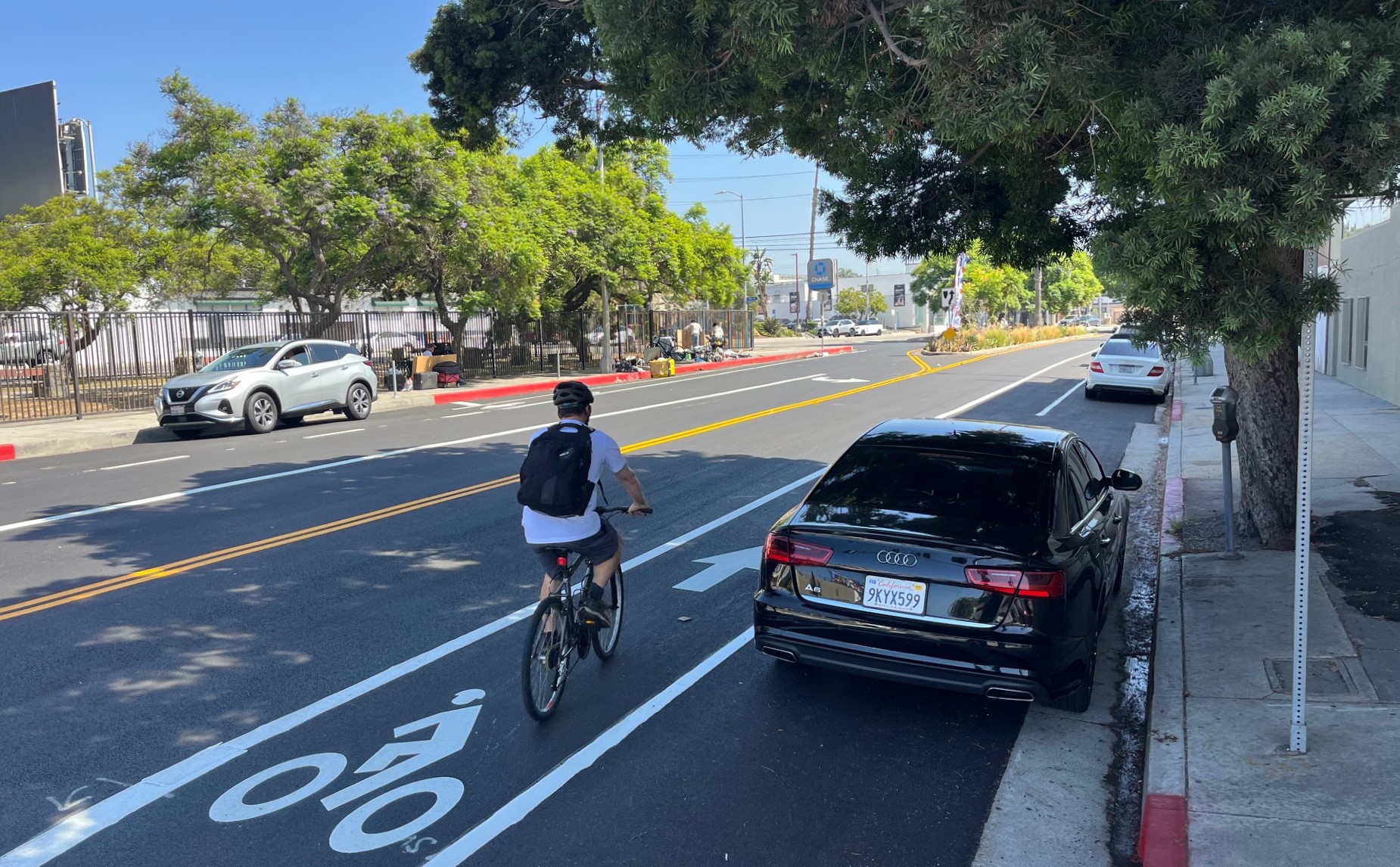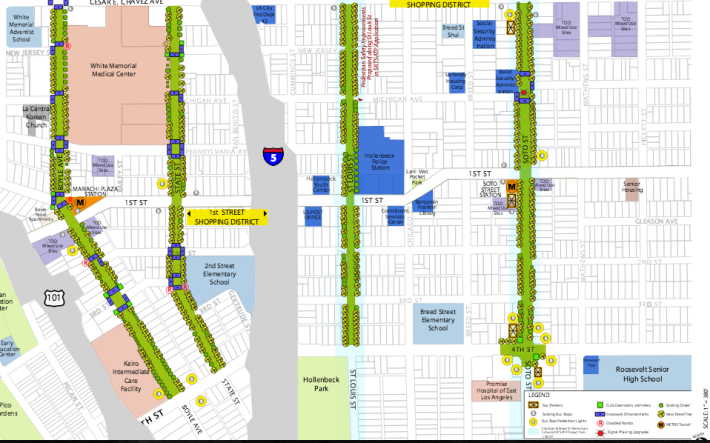
"I'm here to ask that you really take into account accessibility [when implementing any new improvements]," Boyle Heights resident and advocate for those with disabilities, Hector Ochoa, said as the meeting discussing phase two of the Eastside Access Project came to a close Wednesday night.
Phase one -- the $12 million in improvements along 1st Street intended to enhance the pedestrian environment between two important Metro Gold Line stops in Boyle Heights -- had not done so well in that regard.
As documented here recently, new bike racks in the form of flowers and butterflies were placed in the door zones of parking spaces, making it a challenge for wheelchair users like Ochoa to extend their ramps and exit their vehicles.
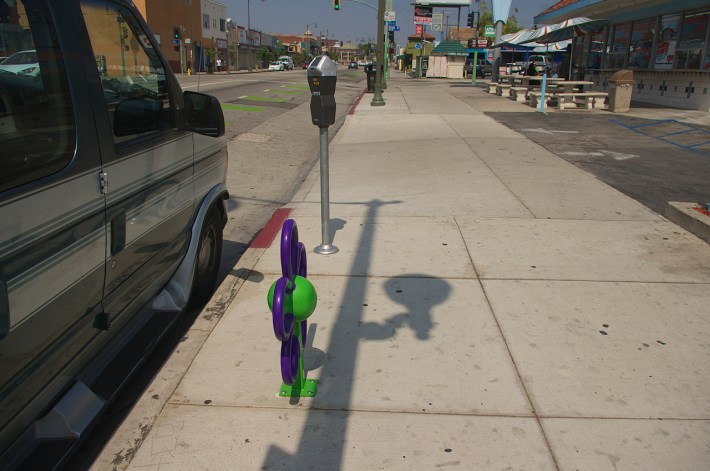
Throughout their presentation on the potential improvements phase two would entail, staff from the Department of Public Works, the Bureau of Street Services, and Councilmember Jose Huizar's office reiterated that the new curb ramps, curb extensions, and improvements around bus stops would all be in compliance ADA standards.
Familiar with this mantra and unconvinced by it, Ochoa reiterated, "Often times the bare minimum is done [for those with disabilities], when we could do a little more."
Making the street more accessible for people like him, he concluded, would benefit everyone that used the street.
Given that the phase two plans for Boyle, St. Louis, Soto, and State appear rather basic, at present, problems of that nature should (hopefully) be easily avoidable.
The proposal seeking $2,237,000 in funding from the Active Transportation Program named sidewalk repair, curb extensions and improved crossings, new trees, and bus stop lighting as enhancements that would improve connectivity between the commercial corridors of 1st St. and Cesar Chavez, to transit options, and to important amenities (Hollenbeck Park) and services (schools, senior centers, medical facilities, etc.). The $3.65 million project (with matching funds added in) would also build on active transportation improvements made as part of phase one of the Eastside Access project, the anticipated $5.6 million in improvements to the sidewalks and overall pedestrian environment slated for Cesar Chavez in 2017, and a Safe Routes to School project intended to make pedestrian access to Breed Street and Sheridan Elementary Schools safer.
Because bus benches are provided free of charge by Martin Outdoor Media (in exchange for advertising being allowed on the benches) benches will also be added to many of the bus stops.
The purpose of the meeting held Wednesday night, while in part to remedy the failure to do outreach ahead of the implementation of phase one of the project, was meant to give residents of the impacted streets a heads' up regarding pending changes and to get their input on the kinds of street trees, bus benches, and bus lighting they would like to see. (Survey options follow after the jump.)
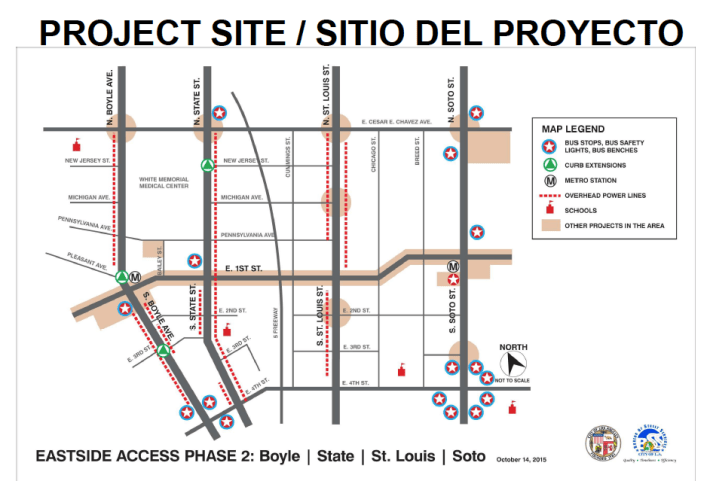
As seen in the map above, power lines run along one or both sides of Boyle, State, and St. Louis (the red dotted lines). Thus, the city has determined that the best way to provide a shade canopy that won't interfere with power transmission or necessitate excessive monitoring is to alternate shorter flowering trees with shorter green, Sweet Bay trees.
Meeting attendees were asked to choose between the Crape Myrtle, has a variety of different colored flowers that bloom in the summer, and a Lavender Trumpet tree, which erupts in very pretty light purple/pinkish flowers in February and March.
For Soto, because there are no overhead power lines, taller flowering trees will be alternated with taller, green African Pine trees. Participants were asked to choose between the Chinese Pistache, which flowers red in the fall, and the Chinese Flame Tree, which flowers in the summer.
Both sets of trees are anticipated to come into maturity about 15 years from now and live for anywhere between 50 and 80 years. Which means that it will be some time before the saplings planted during the improvement process will be able to offer any viable shade. But there is no real alternative to this approach, staff explained, as the roots of larger trees would be less likely to expand and flourish in a street environment.
With regard to bus stop lighting, participants were given three options to choose from (below).
Unfortunately, it is not likely that additional lighting will be extended beyond the enhanced stops to the rest of the street. Because of Proposition 218 -- a 1997 amendment to the California Constitution requiring local governments to get signed petitions of support from property owners who would be assessed fees for the installation and maintenance of the lighting -- efforts to install new pedestrian lighting can become a very drawn-out and time-consuming process. And it seems to be one that the city or the councilmember's office lacks the capacity or funds to take on at the moment.
Finally, attendees were given three different kinds of bus benches to choose from (below).
Both the lighting and benches will be installed at 16 stops identified along Boyle, State, and Soto (see starred points on Project Site map, above). Sidewalk repairs will occur throughout the project site.
Much to the chagrin of those present, bus shelters will not be part of the upgrades. Not unlike in the case of pedestrian lighting, the bureaucratic hoops presented by the permitting process and the prospect of diminishing returns on advertising placed in bus shelters for CBS/Decaux (the firm contracted to install bus shelters and related furniture around the city) mean that new bus shelters are out of the question, at present (more on this in a forthcoming article).
Although ADA ramps at curbs will be implemented (or upgraded) wherever they are needed, curb extensions will be implemented at just three locations: 3rd and Boyle, Pleasant and Boyle (just on Pleasant), and State and New Jersey.

For reasons not explained at the meeting, the curb extensions proposed for 4th and Soto in the ATP application -- needed to help make the crossing safer for the throngs of students from Roosevelt High School that cross there every afternoon -- will not be implemented.
Most of the concerns participants raised during the question and answer period had to do with maintenance of the new improvements. Trees are likely die, they feared, and grass parkways will just attract trash and be filled with weeds. Staff were aware of these concerns, they were told, and would maintain the trees for the first three years and rely on residents to call 311 when necessary and help them keep the area clean.
Staff hoped to finish design and engineering phase, as well as the collection and incorporation of feedback, by Spring of 2016. Concurrently, they are working on putting together a draft environmental impact report, which should be ready by Fall of 2016. Construction is anticipated to run between December 2016 and December of 2017. In the meanwhile, participants were told, the councilmember's office is looking at planning potential improvements to areas along Whittier Blvd. Huizar's office is also continuing to work on completing phase one of the project; improvements around the Evergreen Cemetery and the construction of a placita at 1st and Cummings are some of the pending items.
If you'd like to submit your vote on the trees, lighting, or benches, or offer any other feedback related to phase two of the project, please send your votes/comments to the councilmember's office: Nate.Hayward@lacity.org or via phone: (323) 526-9332.

